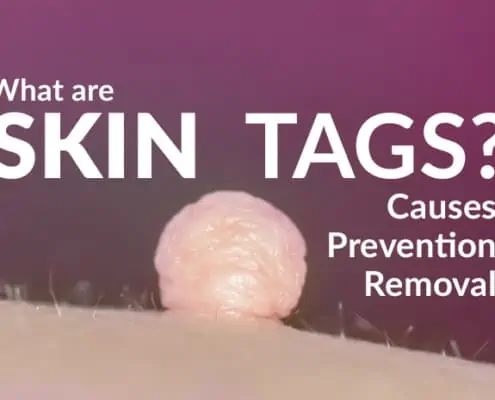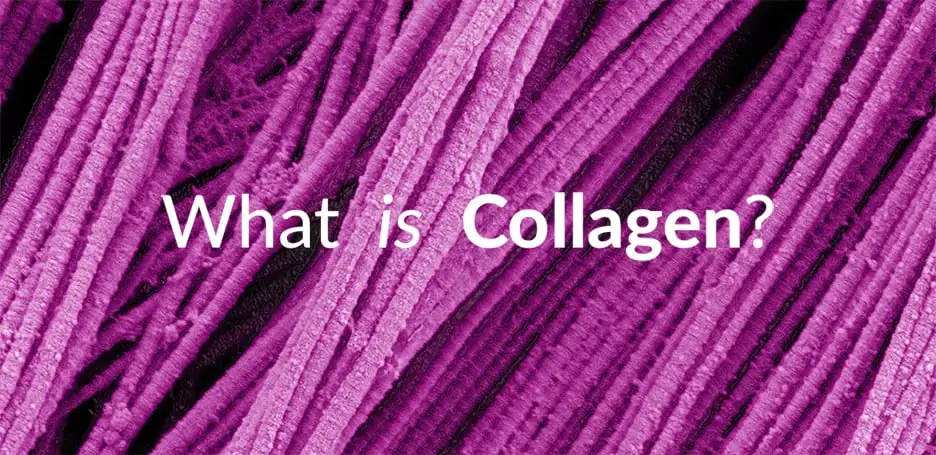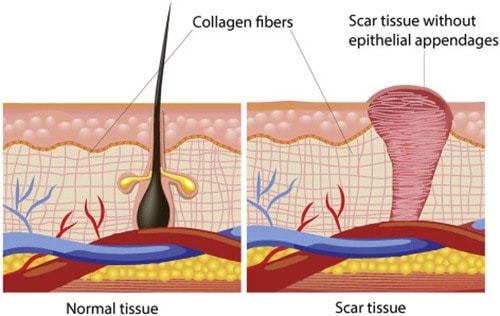
OC 949-428-4500
LA 310-460-2444

Before we can dive into getting rid of wrinkles or sagging skin, we first need to understand the basic biology of collagen.
However, I do understand that unless you are excited by science, you might find the next few paragraphs a tad boring… So to help keep your interest peaked, let me start by saying:
Sexy, gorgeous, lifted, toned, smooth, youthful skin – is all about collagen.
Your skin is comprised of two main layers.
The epidermis is the top thin layer that everybody is looking at. It is comprised primarily of epithelial cells that make a hard protein called keratin and some melanocytes that make melanin which is your natural pigment that protects you from sun damage.
The uppermost layer of the epithelium is comprised of a layer a dead epithelial cells that are filled with keratin and varying amounts of melanin. This dead layer is called the stratum corneum, and in addition to being a crusty layer that protects the underlying live cells, this layer also acts like a sponge that absorbs the oil (sebum) that is secreted by your sebaceous glands found in your dermis. It is by virtue of this oily layer that your epithelium is critically important in keeping your from drying out (desiccation).
Your epidermis is very thin, only about 1 millimeter thick. All human skin coloration is located in this tiny layer. Therefore underneath we are all the same color.
How strange then, that some cultures focus so much attention to this tiny element of our humanness. Really, it’s much ado about nothing.
The dermis is the much thicker layer underneath the epidermis. This layer is filled with a thick layer of collagen, which gives the skin is structural integrity, elasticity, flexibility, tone, fullness, and surface texture.
If your dermal collagen is healthy and strong, your skin will appear smooth, youthful toned and healthy.
If your collagen is damaged, scarred and weak, your skin will appear rough, sagging, thin and wrinkled.
Therefore, your skin’s appearance is a direct indication of your skin’s health.
Sagging, wrinkles, pock marks, roughness and enlarged pores, are all indications of collagen loss, deterioration and damage.
If your skin looks unhappy, physiologically it IS unhealthy.
Collagen is the major structural component of the dermis and is the tissue that is most responsible for the youthful appearance of our skin.
Skin consists of 75% collagen, which in turn accounts for up to 90% of the connective tissues (dermis). Collagen is capable of retaining as much as 8 times its weight in water. Therefore collagen is by far the skin’s major moisturizing element.
Consequently with time, collagen undergoes many different phases of weakening. In our prime, collagen fibers are filled with water. They perform to their fullest because they are constantly supplied with “collagen fibrils” which attach themselves to these fibers, providing them with vitality and moisture.
Although “the production of collagen fibrils” deteriorates with time, our collagen itself is never lost. However, the aging process is instrumental in the decrease of natural nourishment caused by the slower production of fibrils.
As collagen fibers no longer receive adequate nourishment from the fibrils, their potency to retain moisture is on the decline, and with time, they become thinner and slowly dry out.
When we are young, Fibroblast cells in our dermis make abundant amounts of new collagen fibers, which are linked together by cross-bridging and organized into tightly bundled, dense “laminar” layers.
Throughout our lives, our collagen becomes continuously damaged from a variety of factors such as oxidative stress internally (like cigarette smoking) and sun exposure externally. Fibers deteriorate, cross-bridges break, bundles become disorganized and loose, which results in enlarged pores, thinning, wrinkled and sagging skin.
In fact, it is the protein fiber that holds our bodies together. It is the most important structural “connective” tissue found in animals, including humans, and is the most abundant kind of tissue in our bodies (~35%).
It is found in tendons, ligaments, cartilage, bones, blood vessels, cornea, our spinal disks, joints, intestinal walls, muscles, and of course, our skin.
As in all proteins, collagen is made up of small amino acid molecules connected together into short “peptide” chains. These peptides are then connected together into larger and longer chains we call proteins. 20 amino acids are found in human proteins, primarily Glycine and Proline.
Note: Amino acids are also found in other types of important metabolic molecules, such as neurotransmitters, hormones and vitamins.
Of the 20 amino acids needed to make proteins, 13 we synthesize ourselves, and 7 we must get from our food.
These 7 are called “essential” amino acids… and yes, if you don’t eat them, you will get sick and die.
Fully formed collagen fibers are assembled from many protein chains that are linked together.
Each of these long protein chains is naturally shaped like a helix (cork screw) and three of these twisted around each other and linked together into a triple helix make up a single collagen fiber.
Vitamin C is a critically important catalyst (cofactor) in making the cross linking between the 3 protein chains that together comprise a complete collagen fiber.
The reason this is so important to know about, is that human physiology cannot make its own Vitamin C. Therefore, if you are not getting enough Vitamin C from your diet, you will eventually develop “scurvy”, a painful disease caused by having weak collagen.
Depending on the composition of amino acids contained in each chain, and how the collagen chains are linked together will determine what kind of collagen it is. We are going to look at the 3 most common types.
Collagen Type 1 is the most abundant kind of collagen, found in the skin, tendons, and blood vessels.
Of all the collagen types, Type 1 collagen has the most cross-linking between individual fibers. It is essentially a very tight basket weave of fibers all linked together and bonded into bundles, and then stacked into layer upon layer like plywood (laminar layers).
The fibers are oriented and linked in all directions, making the tissue flexible and elastic in all directions. No matter which way you pull healthy skin, it snaps right back into place. Type 1 collagen is incredibly strong, while still being flexible and elastic.
Ounce for ounce, collagen is stronger than steel, and yet it can bend and stretch without being damaged.

Collagen type 2 is called “Hyaline Cartilage”, and is found mainly in joints, and acts as a smooth strong cushion between bones.

Collagen type 3 is found in newly formed tissue such as wounds that are healing, called “granulation tissue”.
When skin is wounded, type 3 collagen is the first kind of collagen that the body creates to heal the wound. When the wound is deep enough to disrupt the dermis, a scar will be formed primarily of type 3 collagen.
Given enough time, type 3 collagen will be remodeled into type 1 collagen. However, the fibers of scar collagen are usually all oriented in the same direction, which means that the multi-directional complexity of the basket-weave cross linking is lost. That is why scar tissue does not have the flexibility and elasticity of normal skin. It is harder and more rigid.
Note: The structure of scars just discussed is important to understanding what procedures can help remodel scars so they blend back into the surrounding skin.
The cells that make collagen
For the most part, fibroblasts are the primary cells in your body that make collagen. Thus, given that you have collagen just about everywhere, fibroblasts are found just about everywhere in your body. As long as your fibroblasts are healthy and working properly, your collagen should also be OK.
However, as you can probably imagine, if there is something wrong with your fibroblasts that causes them to be unable to make healthy collagen, your will be in serious trouble. And given that collagen provides the structural framework for all of your organs, defective collagen is the cause of many serious, debilitating and even fatal diseases.
As this article is focused on discussing skincare of typical skin, addressing diseases associated with defective collagen is beyond the scope of this article.
However, what is germane to this article is discussing the things that affect the health of typical skin.
First thing you must understand is that all tissues in our bodies are constantly being damaged by the normal biochemical “wear and tear” of the essential physiological processes that make life possible. Cells work hard to stay alive as well as do the work they are designed to accomplish for our bodies.
Internally cells are subject to all sorts of natural and necessary stresses, including fairly intense acidic and oxidative conditions.
Even though our physiology is designed with systems that counter act these stresses, our cells can only take so much before they become damaged and dysfunctional. That is why our cells are actually programmed to die when their useful life-span has been reached. This process is called “apoptosis”.
This also means that our bodies must be able to replace the cells that are dying with new and healthy cells. Every organ has its own adult stem cells whose job it is to generate these new replacement cells. Overall, this process is called “cellular turnover”.
In general, the best definition of youth is a state in which “cellular turnover” is running efficiently and all our cells are relatively young and healthy.
When you were a child under 10 years old, you were naturally replacing your entire liver ever few months, and your epidermis every 3-5 days.
In general, the best definition of aging is the process by which “cellular turnover” is slowing down, and not running efficiently. Consequently, a progressively larger percentage of our cells are getting older and less healthy. By the time you are twenty years old, it takes 30 days to replace your epithelium.
In general, as cells get older and function less efficiently, they are also more prone to breaking down and becoming ill, which leads to dysfunctional organs and disease.
Conversely, if you could maintain your cellular turnover at the natural levels of a 20 year old, you would simply never age, and stay effortlessly healthy.
If you are looking to boost the volume and all around health of your skin, there are many different modalities that AMA Regenerative Medicine & Skincare provides to help you achieve younger and healthier looking skin… safely and effectively.
Also see the following articles where we discuss this in more detail…
Doctors Alice Pien, MD and Asher Milgrom, Phd are established pioneers in the fields of Regenerative Medicine and Skincare. Their expertise ranges from advanced laser systems to HCT/P – Stem Cell medicine. Their medical education and advanced certifications span from medical schools of NY State University, the University of Chicago, to Johns Hopkins, Harvard and UCLA. They approach medicine with the clinical expertise of over 85,000 successful treatments over the past 20 years and significant scientific research resulting in proprietary protocols that they customize for each individual patient.
AMA Regenerative Medicine & Skincare | 1570 Brookhollow Dr., Santa Ana, CA 92705 | 6310 San Vicente Blvd STE 285, Los Angeles, CA, 90048 | Privacy Policy